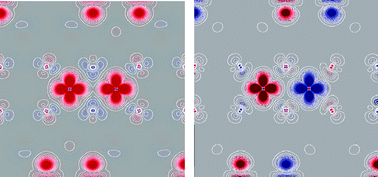A quantum mechanical study of TiCl3α, β and γ crystal phases: geometry, electronic structure and magnetism†
Abstract
The electronic structure of different magnetic states of α, β and γ modifications of TiCl3 has been computed employing the density functional theory with periodic boundary conditions and localized Gaussian basis sets. The analysis of the density of the electronic states (DOS) and of the spin density makes it possible to classify these


 Please wait while we load your content...
Please wait while we load your content...